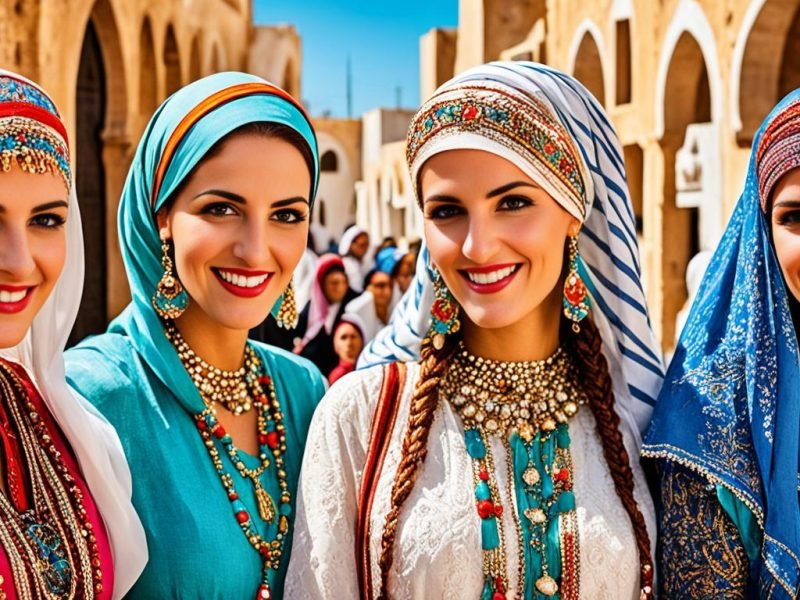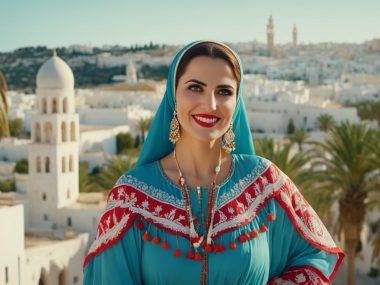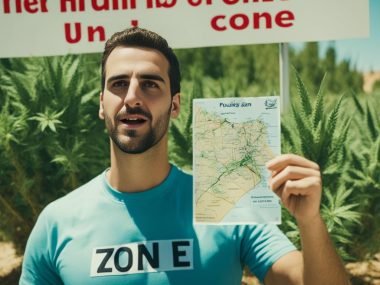Did you know 98% of Tunisia’s people are Arab and Berber? This shows the complex mix of the country. The groups have combined their history and culture over many years. This has created a unique group known as ‘Arag-Berber.’
This blend happened because of big historical events. The Arab conquest and a lot of intermarrying played a big part. These have deeply affected Tunisia’s ethnic roots.
In addition to the major group, 1% are Berbers. Another 1% includes Europeans among others. Tunisia’s careful family planning and stable politics make it unique in Africa. In 2022, each woman had about 2.11 children. The growth rate of the population was 0.69%.
Key Takeaways
- 98% of Tunisia’s population is Arab-Berber, forming a unique ethnic blend.
- The remaining 2% is made up of Berbers and various other ethnic groups, including Europeans.
- Tunisia’s demographic maturity features a fertility rate of 2.11 children per woman and a population growth rate of 0.69% as of 2022.
- The historical amalgamation of ethnicities is a result of events like the Arab conquest and significant intermarriage.
- The nation’s official language is Arabic, and Islam is the predominant religion adhered to by 98% of the population.
The Arab-Berber Population in Tunisia
The Arab and Berber heritages mix, creating a unique culture. This culture shapes Tunisia’s identity. It influences the language, religion, and daily life.
Historical Context
The Arab conquests in the 7th century changed Tunisia. They brought Arabic and Islam to the area. Before that, Berber tribes were the main groups, leaving a lasting effect.
Cultural Influence
The mix of Arab and Berber influences makes Tunisia diverse. This diversity shows in the people’s looks and their traditions. For example, the food in Tunisia is a tasty mix of both cultures.
Language and Religion
Tunisia’s official language is Arabic. The most common dialect is Tunisian Arabic, or Derja. Some places still use the Berber language. Most people in Tunisia follow Sunni Islam, which adds to the diversity.
Role of Berbers in Tunisian Society
Berbers are known as Tunisia’s Indigenous People. They have shaped the region’s history and culture. They were in North Africa before the Arabs.
Historical Presence
The Berbers have a long history. They connected the Mediterranean and sub-Saharan worlds. They impacted Tunisia during the Phoenician, Carthaginian, and Roman times.
“Berbers were pivotal in the cultural exchanges that shaped early North African societies, leaving a lasting Berber Cultural Impact.”
Berber Culture Today
Today, there aren’t as many Berber speakers. But their culture is still strong. In rural areas, they keep their traditions alive.
Geographical Distribution
Berbers mainly live in the Dahar mountains. This area helps keep their traditions. Even with people moving to cities, their roots in these places are strong.
| Geographical Area | Berber Population Density | Key Cultural Contributions |
|---|---|---|
| Dahar Mountains | High | Traditional Crafts and Music |
| Urban Regions | Moderate | Festivals and Cultural Events |
| Other Rural Areas | Variable | Agricultural Practices |
Impact of Arab Migration
The Arab Influence in Tunisia started with the Islamic Conquest in the 7th century. Arab settlers began changing the Tunisian area. Kairouan was one of the first key towns set up.
It became a crucial spot for Islamic learning and culture. With more Arab people moving in, their impact increased. This happened a lot because of the Banu Hilal and Banu Sulaym tribes.
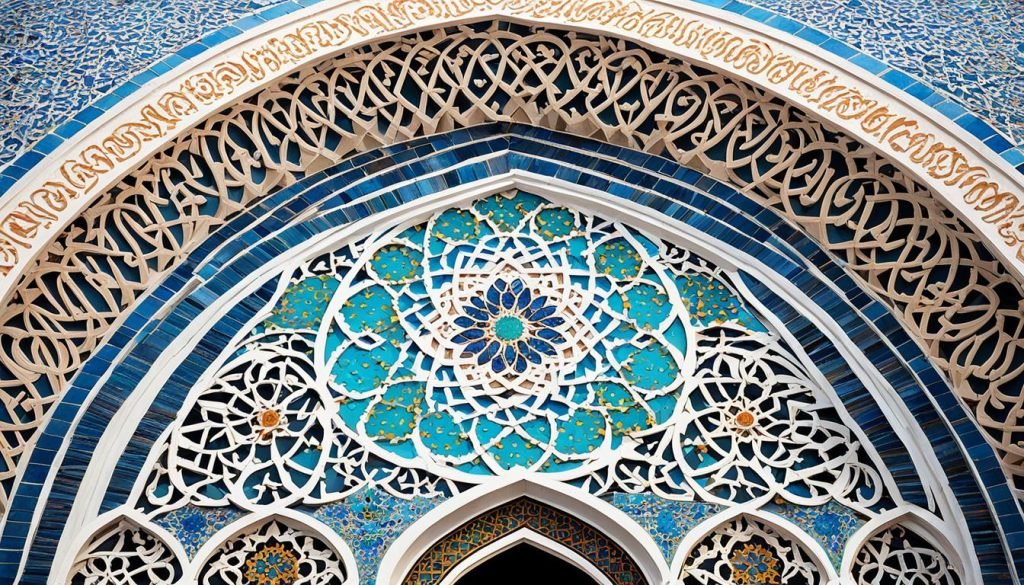
The Arab Settlements brought their language, religion, and traditions. This made Tunisia more of an Arab nation. The settlers started what is now Tunisia’s culture.
| Period | Events | Impact |
|---|---|---|
| 7th Century | Islamic Conquest | Establishment of Kairouan and spread of Islam |
| 11th Century | Banu Hilal and Banu Sulaym migrations | Expansion of Arab influence and cultural integration |
The Islamic Conquest and Arab Settlements ensured the Arab Influence in Tunisia was lasting. These movements deeply changed Tunisia’s identity.
Historical Roots of Tunisian Ethnicity
Tunisia’s history is full of different cultures. Ancient civilisations left their marks here. Phoenicians, Carthaginians, Romans, and Byzantines all contributed.
Phoenician and Carthaginian Influence
The Phoenicians were the first to have a big impact. They started settlements that turned into trade hubs. Carthage, one of these, grew powerful in the Mediterranean. The Carthaginians mixed their culture with the locals’, creating the base of Tunisia’s culture. From them, we hear stories of a great civilisation.
Roman and Byzantine Eras
After the Punic Wars, Rome took over Carthage. This began the Roman era in Africa. The Romans changed Tunisia’s society and culture a lot. Then came the Byzantines, adding to Tunisia’s diversity. Both eras mingled new cultures into Tunisia, making it unique.
The convergence of Phoenician, Carthaginian, Roman, and Byzantine elements in Tunisia’s historic past has sculpted an intricate ethnic mosaic, characterised by a blend of African and Mediterranean influences.
| Era | Key Influences |
|---|---|
| Phoenician Settlements | Formation of Carthage, Trade Development |
| Roman Africa | Cultural Integration, Infrastructure Development |
| Byzantine Era | Continued Cultural and Social Integration |
European Influence on Tunisian Demographics
Tunisia has a rich history. It’s shaped by many cultures and colonial powers. Europe has greatly influenced Tunisia.
Colonial Period
During the French colonial era, France changed Tunisia a lot. They brought European ways of living. This included French and Italian people making homes there.
France changed how Tunisia works. They brought new schools, laws, and buildings. Big cities like Tunis and Sfax got a European look.
Post-Independence Emigration
After gaining independence, many Europeans left Tunisia. But their impact can still be felt today. The French language is widely used, showing their lasting influence.
Even now, Tunisia and Europe are close. They trade a lot and work together. This keeps the European spirit alive in Tunisia.
Religious Diversity among Tunisians
Tunisia mostly follows Islam Predominance. Most people there practise Tunisian Sunni Islam. But, there are also many Religious Minorities in Tunisia.
Other branches of Islam are there too. Shia Muslims and Sufi orders exist but are not as common.
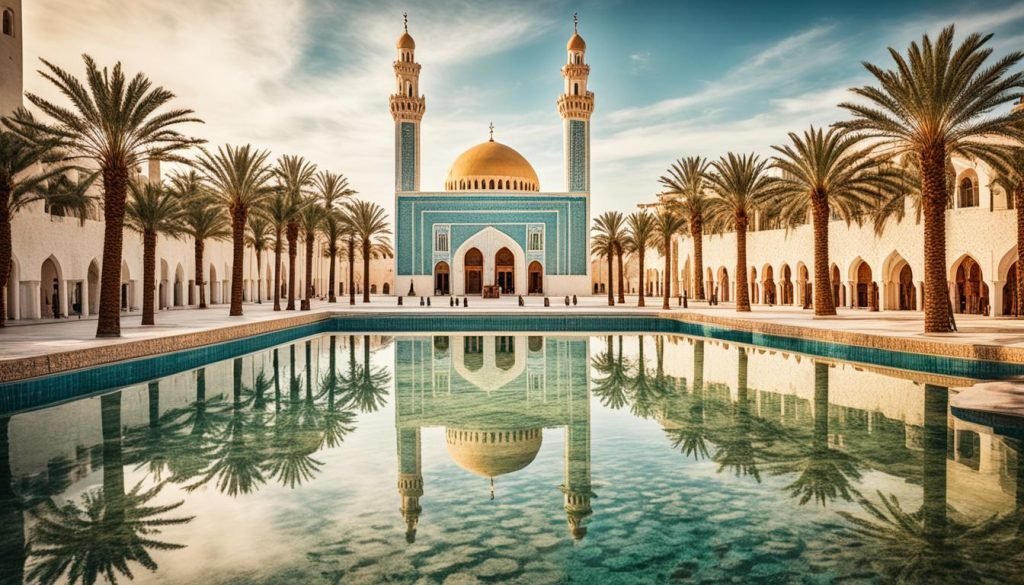
Christians live in Tunisia as well. They are both Tunisians and people from other countries. Cities like Tunis and Sfax have churches.
Tunisia also has a small Jewish community. They mostly live in Djerba and Tunis.
The country’s religious mix comes from its long history. It has seen many different rulers and peoples. This mix allows different religions to be together.
| Religion | Adherents | Key Locations |
|---|---|---|
| Sunni Islam | Over 98% | Nationwide |
| Shia Islam | Less than 1% | Scattered |
| Christianity | Less than 1% | Tunis, Sfax |
| Judaism | Less than 1% | Djerba, Tunis |
Though Tunisian Sunni Islam is widespread, minorities matter too. These minorities show Tunisia as a crossroads of cultures and faiths. It blends various beliefs into one diverse setting.
The Jewish Community in Tunisia
The Jewish community in Tunisia has a long history. They are known for their big contributions. They have greatly impacted Tunisia’s cultural and historical scenes.
Historical Significance
Jews in Tunisia have lived well for centuries, especially in cities like Tunis and Sfax. They were key in building the economy and society. Their shops and skills helped local business a lot.
They also set up synagogues and schools, showing their lasting legacy. Sadly, things changed in the mid-20th century. Many Jews left due to tough times.
Migration Patterns
After Tunisia became independent, life got harder for Jews. Many left for France and Israel, seeking a better life. This made the Jewish community much smaller. Yet, their history in Tunisia is still remembered and valued.
| Category | Early 20th Century | Post-Independence |
|---|---|---|
| Jewish Population | ~100,000 | |
| Main Destinations of Emigration | – | France, Israel |
Changes in Tunisian Demographics Over Time
Tunisia has seen big changes in how many people live there. We’re looking at how birth rates, moving places, and city life have changed things.
Population Growth and Project
Tunisia’s number of people has changed a lot. It’s because of birth rates and people moving. People have moved around inside Tunisia and to other countries too.
Urban vs Rural Demographics
Cities and countryside places in Tunisia are very different. Cities are growing because of jobs, schools, and hospitals. They are getting more and more crowded. But, countryside areas don’t change as fast and are very different.
Rural and city areas have different ways of living. Countryside places may lack new things and grow slowly. City life moves fast, changing how people live in Tunisia.
The Role of Language in Tunisian Ethnicity
Language is very important in defining Tunisian identity. Tunisian Arabic is the main way people in Tunisia talk to each other. The special features of Tunisian Arabic are different from other Arabic forms. They show the affects of history from wars and people moving there.
Tunisia’s language scene is very diverse. Language Diversity is key. Tunisian Arabic is the most common language. But the Maghrebi Dialect brings more culture. It mixes Berber, French, and Italian. This mix shows the rich language history of Tunisia.
Maghrebi Dialects are important in the area’s culture. Even though fewer people speak Berber now, it’s still a sign of Tunisia’s varied history. Many people also speak French because of the past colonial times. This makes Tunisia’s languages even more varied.
The mix of these dialects shows Tunisia’s lively past and its changes. As I look more at these languages, I see how they help make Tunisia’s identity. Through language, we can see Tunisia’s rich culture and history.
Conclusion
To truly get the feel of Tunisian ethnicity, one must dive into its rich and varied culture. This North African nation is mainly Arab-Berber. This shows it has a long and mixed history. Early visitors like the Phoenicians left a big mark on the area. Later, the Romans and Byzantines added their touch.
Arab arrivals later played a big part in forming today’s Tunisia. They mixed with the Berbers, creating a special combo. Then, European colonisers added even more layers. They changed the people and their ways, including how they talk.
Thinking about Tunisia’s people, you see a mix made over many years. This mix has made the country’s culture rich and lively. To understand it, we need to look at all these bits that came together. Tunisia is known for its special mix of cultures.

